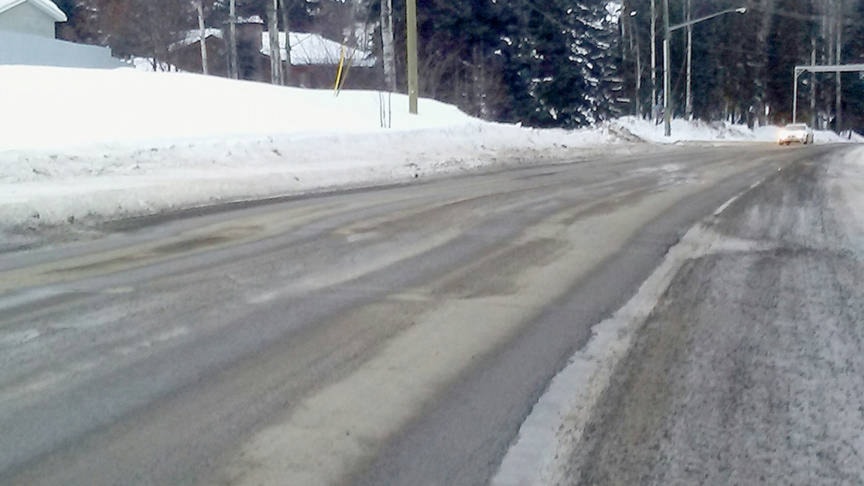The District of Houston’s paved roads are in generally good condition, a study for the district has determined.
And it states that asphalt overlays and spot repairs when required as well as regular maintenance will keep the paved road network in good repair.
Broken down by percentages, the study concluded 64 per cent of the asphalt surface is in good condition overall, 13 per cent are in fair conditions but the remaining 23 per cent are in poor or very poor condition.
Prepared last year by Allnorth Consultants, the study is part of the district’s program to determine the condition of all of its assets along with estimated costs of repair or replacement in the years ahead.
The study also examined the state of the district’s gravel roads and sidewalks, curbs and gutters.
In examining the state of paved roads, Allnorth has recommended an annual maintenance program amounting to $1.5 million a year on average over the next 10 years.
Council moved to accept the report.
This is the first time the district has commissioned such a thorough inventory of its roads, sidewalks, curbs and gutters with a view to future expenditures.
All told, the district has 234 sections of roads of which 162 sections are paved, amounting to 24 kilometres, 43 per cent of its 63.3 kilometre road network.
Allnorth determined the road network of asphalt, gravel and chipseal has a worth of $76.25 million, sidewalks a worth of $1.71 million and curbs and gutters a worth of $5.32 million for a total value of $83.28 million.
The consultants further broke down the paved surfaces into two categories — urban and rural, noting that 80 per cent of urban paved roads are in good condition with 13 per cent being in fair condition and three per cent in poor or very poor condition.
But for rural asphalt roads, just 40 per cent are in good condition with eight per cent being in fair condition and 53 per cent being in poor or very poor condition.
“This split between urban and rural asphalt condition is common for municipalities, and reflects the different expectations or level of service and population served between urban and rural areas,” the report continued.
Referring to the condition of asphalt roads, the study indicated the District’s current “asphalt maintenance strategy is effective for the large majority of urban roads, although there would be some benefit from increased annual maintenance works to improve the 20 per cent of roads not currently meeting the target level of service.”
“For rural (asphalt) roads, the district should formally establish whether the level of service for rural areas differs from urban areas,” the consultants continued. “This decision will inform the split of maintenance investment within the District’s annual budget.”
Within its recommended $1.5 million annual average expenditure for asphalt repair and maintenance, Allnorth sketched out specific suggested work for the next 10 years and a plan for the 10 years after that.
Using 2019 as the starting year, Allnorth recommends a structural overlay of 964 metres of the Buck Flats Road with an estimated cost of $827,000 as being the most expensive of the 10 projects proposed.
Portions of Haftner Road, Harvie Road, Highway Crescent, Norwood St., Poplar St and Poulton Ave. round of the proposed plan.
The majority of the district’s 17.7 kilometres of gravel road were found to be in fair to good condition with a strategy suggested to “allow the network to be maintained with the minimum amount of regular maintenance work and ensure the road network is sustainable.”
Allnorth is suggesting gravel roads be inspected every three to five years.
As for maintenance and upkeep, including adding gravel and grading, Allnorth estimates a $133,000 annual budget is needed.
